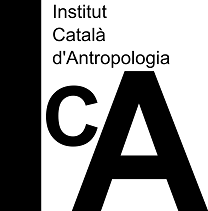Architecture and urban ethnography: drifting between the familiar and the unknown of everyday life
DOI:
https://doi.org/10.56247/qua.410Keywords:
everyday life, ethnographic method, walking, writing, planningAbstract
The aim of this article is the compilation of walking experiences and stories that address proximity (the familiar) and distance (distant and different objects/subjects) as components of urban daily life. Recognising the fundamental role of the interdisciplinary approach between architecture and anthropology for the study and interpretation of urban processes, my
theoretical-practical approach is based on two axes: a) the ethnographic method as an analytical tool for the urban study and b) the introduction of the variable of time as memory, presence and perception of urban
metamorphoses. The potentiality that has been disguised under the commodification of the city is revealed through practices that originate and
give birth to radically critical and at the same time affective behaviours concerning the ways of living and experiencing the city. It is therefore possible to aspire to an architectural
and urban perspective that seeks to reconcile the intimate and the unfamiliar elements of everyday life in contemporary metropolises, using the method of empirical research in situ that anthropology provides for the hermeneutics of diversity. Its value also lies in the recovery of the oral tradition associated with the architecture of the city.
Downloads
Global Statistics ℹ️
|
651
Views
|
526
Downloads
|
|
1177
Total
|
|
References
Amerlinck, M.J. y Bontempo, J.F. (1994). El entorno construido y la antropología: introducción a su estudio interdisciplinar. Ciesas.
Araújo, J. (1992). História da Afurada. Junta de Freguesia de São Pedro da Afurada.
Augoyard, J.F. (1979/2009). Step by step. University of Minnesota.
Benito Alonso, A. de. (2017). La casa como escenario lúdico: los objetos domésticos subvertidos. El jugar como acción creativa y experimental en el entorno cotidiano, Revista Europea De Investigación en Arquitectura, 7-8, 95-113.
Berenstein Jacques, P. (2012). Elogio aos errantes. EDUFBA. DOI: https://doi.org/10.7476/9788523208707
Breton, A. (1927/2011). Nadja. Ediciones Cátedra Letras Universales.
Breton, A. (1937/2008). Amor loco. Alianza Editorial.
Careri, F. (2002/2014). Walkscapes. El andar como práctica estética. Gustavo Gili.
Careri, F. (2016). Pasear. Detenerse. Gustavo Gili.
Certeau, M. de (1974-80/2000). La invención de lo cotidiano. 1 Artes de Hacer. Universidad Iberoamericana.
Copans, S. (1998/2004). L ́Enquête ethnologique de terrain. Editions NATHAN [edición griega: Η επιτóπια εθνολογική έρευνα. Βιβλιοθήκη κοινωνικής επιστήμης και κοινωνικής πολιτικής. Gutenberg].
Debord, G. (1955/2000). Introducción a una Crítica de la Geografía Urbana. A Parte Rei: revista de filosofía, 11. http://serbal.pntic.mec.es/~cmunoz11/debord3.pdf
Degen, M. y Rose, G. (2012). The sensory experiencing of urban design: the role of walking and perceptual memory. Urban Studies. 49(15), 3271-3287. DOI: https://doi.org/10.1177/0042098012440463
Delgado, M. (1999). El animal público. Anagrama.
Delgado, M. (2007). Sociedades movedizas. Pasos hacia una antropología de las calles. Anagrama.
Doxiadis, C. (1954). Diarios de viaje 1954-1956. Melissa.
Filippidis, D. (2019). Arquitectura anónima. Una presencia tácita. Piraeus Bank Group Cultural Foundation. [edición griega: Ανώνυμη αρχιτεκτονική. Μια άρρητη παρουσία. Πολιτιστικό Ίδρυμα Ομίλου Πειραιώς].
Harvey, D. (2008). The right to the city. New Left Review, 53, 23-40.
Lefebvre, H. (1968/1978). El derecho a la ciudad. Península.
Lefebvre, H. y Régulier (1992/2007). Ritmo-analysis: espacio, tiempo y vida cotidiana. Continuum.
Mantzou, P. (2000). Utilización de medios audiovisuales como modificadores del espacio arquitectónico (Tesis doctoral no publicada). Universidad Politécnica de Madrid.
Muiño, E. S. (2016/2018). Sentir Madrid como si existiera un todo. Geografía pórtico y etnografía reencontrada de una ciudad. La Torre Magnética.
Neves, T. (1998). Surrealismo e etnografia. Relações antigas, debates actuais. Trabalhos de Antropologia e Etnologia. 38(3-4), 131-144.
Peralta, E. (2010). “Somos todos marítimos”: uma etnografia das (in)visibilidades do poder na representação social do passado local em Ílhavo. Etnográfica. 14(3), 443-464. DOI: https://doi.org/10.4000/etnografica.249
Perec, G. (1974/2003). Especies de espacios. Editorial Montesinos.
Pietra, U. la (1977). La riappropriazione della città [Video] https://tinyurl.com/2p9examw . FRAC Centre Val du Loire.
Pina Cabral , J. M. de (junio de 1955). Afurada, Boletim da Associação Cultural Amigos de Gaia, 31-35.
Pina Cabral, J. M. de (noviembre de 1955). Afurada, Boletim da Associação Cultural Amigos de Gaia, 54-58.
Simmel, G. (1903/1986). Las grandes urbes y la vida del espíritu. En G. Simmel, El individuo y la libertad (pp. 247-261). Península.
Stavrides, S. (2001). Navigating the metropolitan space. The Journal of Psychogeography and Urban Research, 1(1). 1-5.
Thoreau, H. D. (1862/1998). Caminar. Árdora Exprés.
Whyte, W. (1988). The social life of small urban spaces [DVD]. Municipal Art Society of New York.
Woolf, V. (1929/2018). Una habitación propia. Alianza Editorial.
Downloads
Published
How to Cite
Issue
Section
License
Distributed under the terms of the Creative Commons Attribution 4.0 International Use and Distribution License (CC BY-NC-SA 4.0)




